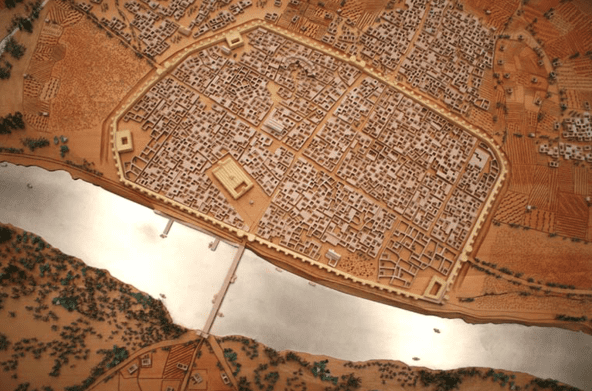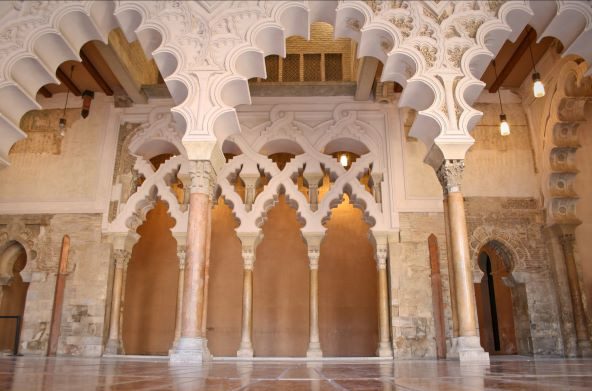




Use of this site indicates your consent to the Terms of Use.
Copyright © 2018–2024 Let's go Halal™. All rights reserved.




No worries. Enter your email address,
and we’ll send you a link to reset it.

Let's Go Halal > Blog > Islamic legacy > Unveiling Aragon: the heart of Northern Al-Andalus
Between the years 714 and 1118, this region was one of the most important territories of Islamic Spain.
by Let’s Go Halal | Nov 29, 2024 • 6 min read


Welcome to Thagr Al-Andalus, the northernmost lands of Al-Andalus, where the fascinating history of Muslim presence in Spain unfolds in the heart of Aragon. Stretching from the Ebro Valley to the Pyrenees, and made up of three provinces – Zaragoza, Teruel, and Huesca – this region (the fourth largest in Spain) is full of surprises.
Aragon is a diverse territory, crossed by one of the main radial roads in the country, connecting Madrid and Barcelona. In this region, you’ll find major cities like Zaragoza, the capital, which is the fifth most important city in Spain and home to over half of the region’s population. But what makes Aragon truly unique are its countless small cities and towns (over 730 municipalities), each brimming with history, flavor, and tradition, where life moves at a peaceful pace.
Aragon is a marvel of nature, home to Spain’s most powerful river, the Ebro, and the highest mountains – the Pyrenees. The landscapes are as beautiful as they are diverse: from snowy peaks to water-filled valleys, and even a desert (the Monegros, between Zaragoza and Huesca).
But perhaps what will fascinate you the most is Aragon’s history as one of the most important territories of Al-Andalus, and the northernmost of all: Thagr Al-Andalus.
Did you know that Aragon is home to one of the peaks of Islamic art in Spain, the Aljafería Palace? Or that it was here that the most powerful independent Muslim kingdom (taifa) flourished, both economically and culturally, throughout the Iberian Peninsula? We’re talking about the Taifa of Saraqusta (the Arabic name for Zaragoza).
Let us take you through some of the wonders and surprises of Aragon’s history and its rich legacy as the land of Al-Andalus.

Overview of the town of Albarracín, founded during the time of Al-Andalus.
Thagr Al-Andalus refers to the territory spanning primarily the Ebro Valley, with Zaragoza as its capital. This region formed the northern border of Al-Andalus, which came close to the Pyrenees, in areas that are now part of the province of Huesca.
From the arrival of the Muslims in 714 until its independence in 1018 under Sultan Mundir I, this region held a strategic position and enjoyed a significant degree of administrative autonomy within Al-Andalus. Zaragoza, with a population of 50,000 by the 11th century, became an important cultural, commercial, and intellectual center, connecting the Muslim world with Northern Europe. The city’s trade routes helped facilitate the flow of goods and ideas, shaping it into a thriving hub of commerce and knowledge. The legacy of this prosperity remains visible today in a spectacular monument: the Aljafería Palace.

Model of Saraqusta (Zaragoza) and its suburbs in the 11th century, along the Ebro River.
When the Muslims first arrived in the Ebro Valley in 714, there were only three established cities: Zaragoza, Huesca, and Tarazona. By the end of the 8th and early 9th century, they founded new towns such as Calatayud, Mequinenza, Daroca, Barbastro, and Albarracín, shaping Aragon into a thriving network of medinas. These cities became centers of commerce, learning, and craftsmanship, where markets, mosques, fortresses, and palaces flourished.
At the heart of it all was Zaragoza (Saraqusta), which later became the capital of the Marca Superior (Northern border) and the powerful Taifa of Saraqusta. This bustling city attracted scholars from all over the Muslim world, including the renowned philosopher Ibn Bayyah, who embodied the spirit of Andalusian intellectualism.

The Aljafería Palace is one of the most iconic landmarks of Islamic architecture in Aragon and in all of Spain. Along with the Great Mosque of Cordoba and the Alhambra of Granada, it stands as one of the pinnacles of Islamic art in Spain. Originally built as a fortress in the 9th century, it was transformed into a stunning royal palace in the 11th century, serving as the heart of the Saraqusta Taifa. The palace showcases unique architectural elements such as the mixtilinear arch, which would later influence the development of Mudejar art in the region.
The Aljafería remains a vibrant symbol of the cultural richness and political power that once thrived in Saraqusta, and today it stands as a living testament to the grandeur of Muslim rule in Aragon.

Some authors refer to this style as “Zagrí architecture” (derived from the English pronunciation of the Arabic word Thagr). For these experts, Zagrí architecture is a unique style that emerged in Aragon, blending elements of Islamic architecture with Persian influences. Characterized by the use of brick and plaster, this style drew heavily from Eastern models, especially those of Persia. The use of plaster, uncommon in the West, became a hallmark of this architectural tradition.
The alminars (minarets) and mosques built during this period were later adapted into Christian bell towers, a transformation that continued to influence the evolution of Mudejar architecture. The integration of Islamic forms with Christian practices created a distinct, hybrid architectural style that would later come to define the Mudejar period, flourishing during the 13th and 14th centuries.

Recreation of the image of Al-Muqtadir, the ruler of the Taifa of Zaragoza in the early 11th century.
Among the great intellectuals of Saraqusta was Ibn Bayyah (known in the West as Avempace), a philosopher, physician, and polymath. Born in Zaragoza, Ibn Bayyah became a key figure in the philosophical and scientific movements of Al-Andalus. His work bridged the gap between Eastern and Western knowledge, influencing both Islamic and later European thought. His contributions to ethics and political philosophy were profound, and he is considered one of the major representatives of the Peripatetic school of philosophy in the Muslim world.
In addition to the intellectuals, Al-Muqtadir, the ruler of the Taifa of Zaragoza in the early 11th century, played a pivotal role in the city’s cultural and economic flourishing. Under his leadership, Saraqusta became a major cultural center, attracting scholars, poets, and scientists. Al-Muqtadir’s patronage of the arts and sciences allowed Zaragoza to reach its peak, establishing it as one of the most influential cities of Al-Andalus during its time.
Come and explore Aragon’s ‘Andalusi’ heritage, and let the region’s rich cultural mosaic captivate your imagination. Whether you’re marveling at the Aljafería palace, wandering through the ancient medinas, or savoring the flavors of the region, Thagr Al-Andalus invites you to experience its timeless beauty and profound legacy.
Main photo credit: Juan José Ceamanos.